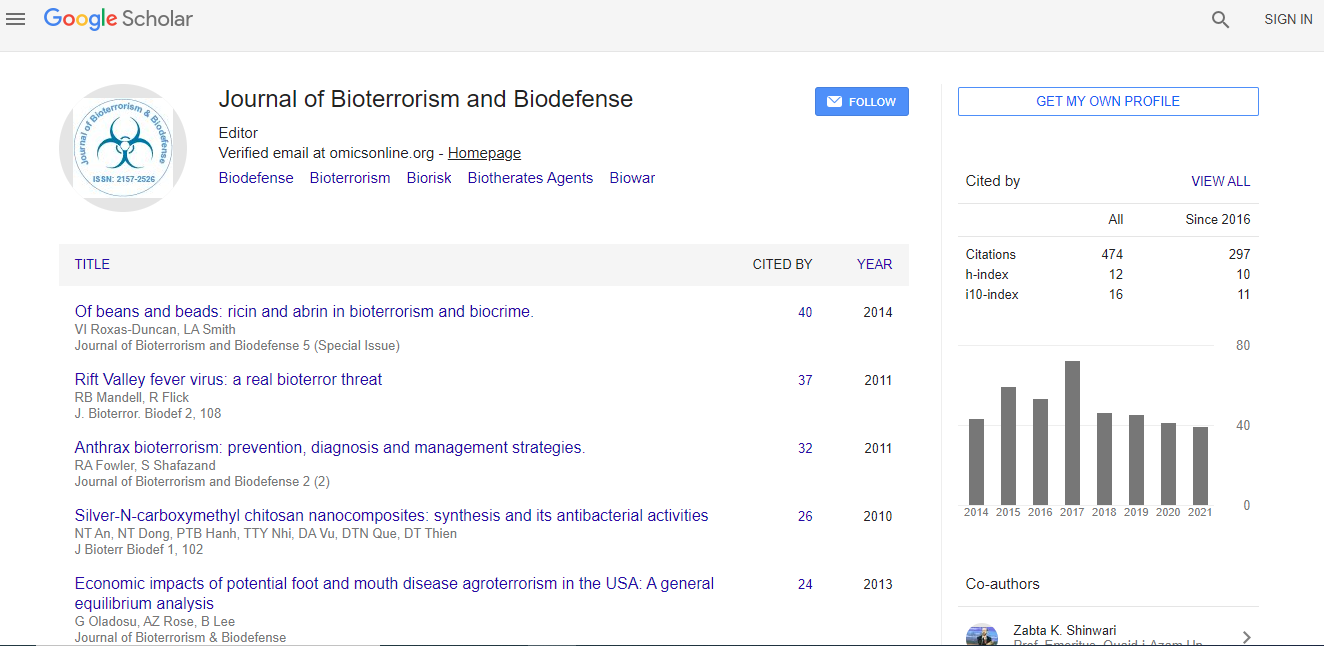Short Communication
*Corresponding Author:
Copyright: © 2021 . This is an open-access article distributed under the terms of the Creative Commons Attribution License, which permits unrestricted use, distribution, and reproduction in any medium, provided the original author and source are credited.
Abstract
Biological hazards, also known as biohazards, refer to biological substances that pose a threat to the health of living organisms, primarily that of humans. This can include medical waste or samples of a microorganism, virus or toxin (from a biological source) that can affect human health. It can also include substances harmful to other animals. Bioterrorism agents are living organisms, such as bacteria, viruses, or fungi, or toxins that are deliberately used to sicken and kill. They may be used by terrorists partially because of their psychological impact on the public and partially because they can be deadly, are easy to distribute, are a relatively inexpensive weapon, and are difficult to detect. Bioterrorism agents have been used in acts of warfare for thousands of years. This has included dipping arrows into toxins, poisoning food and water supplies, and deliberately spreading deadly infections. Bioterrorism agents can be carried in food products, dispersed into the air or drinking water, introduced into crops and livestock. A vaccine is a biological preparation that provides active acquired immunity to a particular disease. A vaccine typically contains an agent that resembles a disease-causing microorganism and is often made from weakened or killed forms of the microbe, its toxins or one of its surface proteins. The agent stimulates the body’s immune system to recognize the agent as a threat, destroy it, and keep a record of it, so that the immune system can more easily recognize and destroy any of these microorganisms that it later encounters

 Spanish
Spanish  Chinese
Chinese  Russian
Russian  German
German  French
French  Japanese
Japanese  Portuguese
Portuguese  Hindi
Hindi 